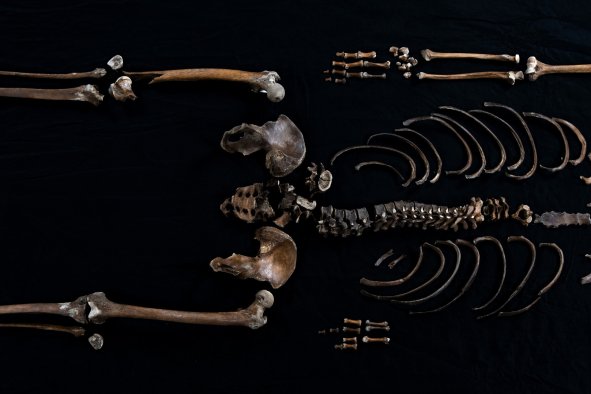A chunk of rock and ice about the same size as a bus is due to skim past the Earth on Monday.
The asteroid, named (2024 UQ1), measures between 25.3 feet and 55.8 feet, according to NASA's Jet Propulsion Laboratory (JPL) Center for Near-Earth Object Studies (CNEOS), but is likely to be around 32 feet across. For reference, buses are usually between 35 and 45 feet long.
This asteroid is due to zoom past the Earth on October 28, passing us at a distance of about 148,000 miles, which is closer to our planet than the moon.
This may sound like an immense distance, but on a space scale, this is very close: The moon orbits us at a much greater distance of 238,900 miles, and the sun is about 93 million miles away.
"Asteroids are "bits of a planet that didn't happen" that orbit the Sun between Mars and Jupiter – the Main Asteroid Belt. However, as they are relatively small, asteroids have orbits that can be perturbed quite easily, so they can develop orbits that cross those of planets," Jay Tate, director of the United Kingdom's Spaceguard Centre observatory, told Newsweek.
There are four other larger asteroids expected to skim past our planet in the coming days, but these won't come as close as (2024 UQ1). Asteroids (2024 TB2) and (2007 UT3), both around the size of airplanes, will pass Earth on October 26 at distances of 731,000 miles and 4,200,000 miles, respectively.
(2016 BF1), also airplane-sized, will pass on October 27 at a distance of 2,460,000 miles. A much larger 500-foot asteroid named (2020 WG) is additionally forecast to pass us from 2,070,000 miles away on October 28.
Bus-sized (2024 UQ1), along with plane-sized (2024 TB2), (2007 UT3) and (2016 BF1), are all classified by CNEOS as Near-Earth Objects or NEOs, which are objects that are within 30 million miles of Earth. There are over 30,000 objects in our solar system classified as NEO.
"Asteroids and comets with a perihelion distance (closest to the Sun) less than 1.3 astronomical units (AU), or approximately 120 million miles, are called near-Earth objects—or NEOs," Svetla Ben-Itzhak, an assistant professor of space and international relations at Johns Hopkins University, previously told Newsweek.
Some NEOs are also considered potentially hazardous asteroids (PHAs) if they also come within around 4.6 million miles of Earth and have a diameter of at least 460 feet. PHAs are also brighter than a magnitude of 22.0 or less.
"A potentially hazardous asteroid (PHA) is one that has an orbit intersecting the Earth's orbit around the Sun by less than 0.05 astronomical units (1 AU is the distance to the Sun), that's just over 4.5 million miles. It also has to have an absolute brightness of 22.0 or less (lower values of the magnitude are brighter = larger objects), ie. an asteroid (or comet) that would cause significant regional damage if it hit the Earth," Martin Barstow, a professor of astrophysics and space science at the University of Leicester in the U.K., previously told Newsweek.
"Not all NEOs are potentially hazardous, but all hazardous objects are NEOs."
Due to its size, (2020 WG) is also considered a PHA. Despite these classifications, none of the upcoming asteroids are at all likely to collide with Earth.
However, if a PHA did ever hit the Earth, it could be catastrophic for human civilization.
"Not all cosmic objects present a threat to Earth. If a cosmic body [of 460 feet (140 meters) in diameter] crashed into Earth, it could destroy an entire city and cause extreme regional devastation; larger objects over 1 kilometer [in diameter] could have global effects and even cause mass extinction," Ben-Itzhak said.
Do you have a tip on a science story that Newsweek should be covering? Do you have a question about asteroids? Let us know via science@newsweek.com.
Disclaimer: The copyright of this article belongs to the original author. Reposting this article is solely for the purpose of information dissemination and does not constitute any investment advice. If there is any infringement, please contact us immediately. We will make corrections or deletions as necessary. Thank you.



